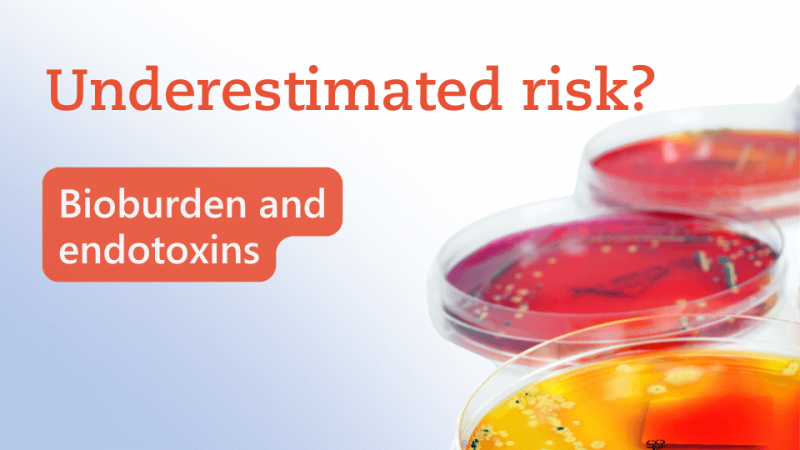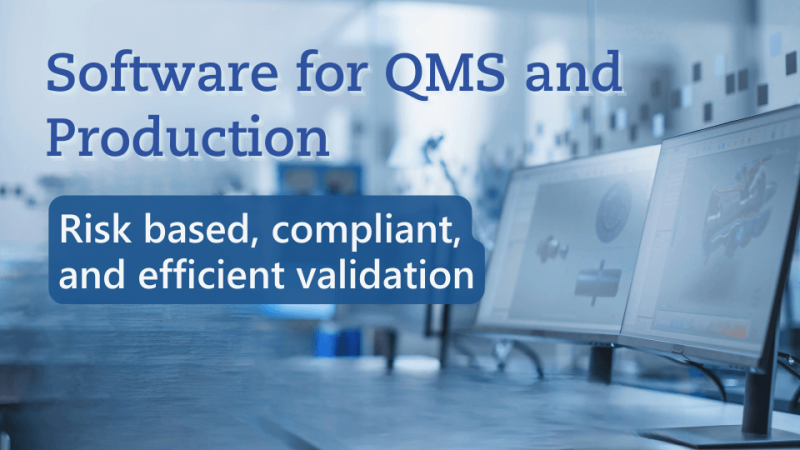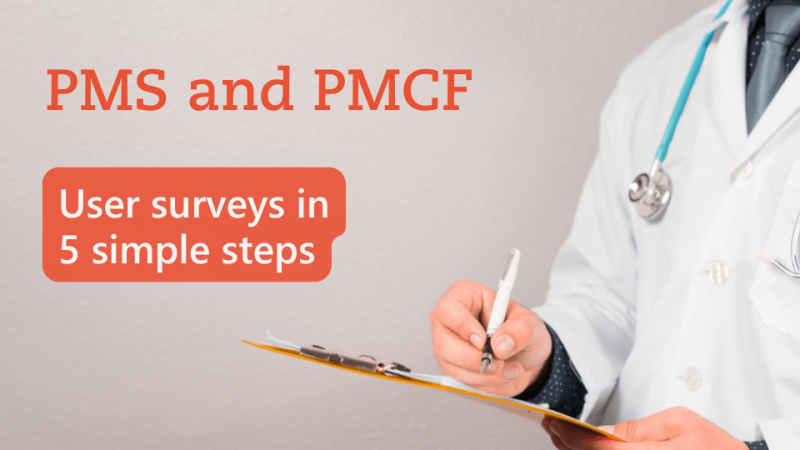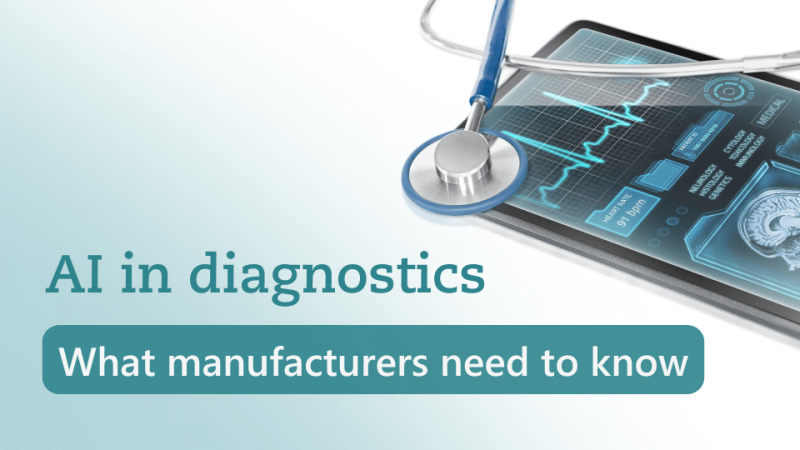Bioburden and endotoxins in medical devices: Regulatory requirements and underestimated risks
15/07/2025
Do you have any questions about the article or would you like to find out more about our services? We look forward to hearing from you!Make a non-binding enquiry now
Microbiological quality is more than a regulatory checkbox - it is essential to patient safety. Many manufacturers of invasive medical devices underestimate the long-term importance of a well-planned strategy for controlling bioburden and endotoxins. In addition to the requirements set out in the MDR, ISO 11737-1, or AAMI ST72, manufacturers also face practical challenges: What evidence must be provided? How can test strategies be validated cost-effectively? And how can country-specific requirements be integrated meaningfully as early as the development phase?This article provides an overview of the relevant regulatory requirements, test methods, and risk factors - and outlines how manufacturers can proactively identify and mitigate potential risks.
Validation parameters such as recovery efficiency and detection limit must be documented and regularly verified. There are no universal limits for bioburden. Instead, product-specific limits must be defined based on risk assessments and process control. In practice, trend analyses are often used to detect deviations from the microbiological baseline at an early stage.The gold standard for endotoxin detection is the Limulus Amebocyte Lysate (LAL) test, which relies on the coagulation response of blood components from the horseshoe crab Limulus polyphemus. After rinsing with water for injection (WFI), one of the following test methods is performed:
Understanding risks and ensuring compliance
Microbiological quality is a critical aspect of product safety for medical devices, especially those intended to be marketed as sterile. A key focus is determining bioburden, i.e. the microbial load present on a product. This parameter is not only relevant for regulatory compliance but also for validating and routinely monitoring sterilization processes. In many cases, however, microbiological sterility alone is not sufficient. For medical devices that come into contact with the bloodstream, cerebrospinal fluid, or other sterile body compartments, bacterial endotoxins released upon cell lysis can pose a significant risk. Controlling endotoxins is therefore a vital part of hygiene management and regulatory compliance.What are bioburden and endotoxins?
According to ISO 11737-1, bioburden is defined as the total number of viable microorganisms (e.g., bacteria and fungi) present on a medical device or its packaging prior to sterilization. Bioburden determination provides:- a basis for validation and requalification of sterilization processes,
- a parameter for evaluating the effectiveness of cleaning processes, and
- insight into microbiological fluctuations in manufacturing.
- medical devices for intravascular use (e.g., catheters, stents),
- implantable systems, and
- products that come into contact with the central nervous system (e.g., shunts, neurosurgical implants).
Bioburden control and endotoxin testing: Regulatory requirements
Annex I, Section 11 of the Medical Device Regulation (EU) 2017/745 (MDR) outlines the general safety and performance requirements related to infection and microbial contamination. It mandates that products and their manufacturing processes must be designed to eliminate or minimize the risk of infection to patients, users, and third parties. Microbial contamination must be controlled during use, and any microbial leakage from the product must be prevented as much as possible. In all cases, validated microbiological control must be demonstrated as part of the quality management system under ISO 13485. ISO 11737-1 sets out the requirements for counting and characterizing viable microorganisms present on or in a medical device.The control of pyrogenic substances, especially bacterial endotoxins, is required for many product categories. According to AAMI ST 72, medical devices that have direct or indirect contact with the cardiovascular system, lymphatic system, or cerebrospinal fluid must be tested for endotoxins. This includes, among others, intravenous catheters, implants, tubing, accessories for extracorporeal oxygenation devices, heart valves, and vascular prostheses. FDA considerations regarding test recommendations and acceptance criteria are outlined in the Guidance for Industry: Pyrogen and Endotoxins Testing—Questions and Answers and in the United States Pharmacopeia (USP) Chapters 85 and 161.Test methods, validation, and limits: What manufacturers need to know
Bioburden is typically determined through the following steps:- Microbial release: Microorganisms are rinsed from the device using an appropriate method.
- Cultivation: The rinse extract is incubated on non-selective nutrient media under defined conditions (aerobic/anaerobic, temperature).
- Evaluation: The number of colony-forming units (CFU) is counted.
Validation parameters such as recovery efficiency and detection limit must be documented and regularly verified. There are no universal limits for bioburden. Instead, product-specific limits must be defined based on risk assessments and process control. In practice, trend analyses are often used to detect deviations from the microbiological baseline at an early stage.The gold standard for endotoxin detection is the Limulus Amebocyte Lysate (LAL) test, which relies on the coagulation response of blood components from the horseshoe crab Limulus polyphemus. After rinsing with water for injection (WFI), one of the following test methods is performed:
- Gel-clot assay: Simple, sensitive, and visually readable (qualitative only; considered outdated)
- Kinetic chromogenic assay: Colorimetric (quantitative and qualitative)
- Kinetic turbidimetric assay: Measures turbidity, suitable for automation (quantitative and qualitative)
From development to testing: Strategies for microbial safety
To minimize endotoxin load, a consistently low bioburden and a controlled, reproducible manufacturing process are essential. Microbial contamination may be influenced by numerous production- and environment-related factors. Manufacturing should occur in classified cleanrooms according to ISO 14644, with appropriate personnel hygiene measures in place. During the development phase, material characteristics such as porosity or bio adhesion can also influence the potential microbial load. Ongoing in-process controls, cleaning validation, and endotoxin testing of finished products are all components of a comprehensive hygiene strategy.Bioburden and endotoxins under control - getting it right from the start
Bioburden monitoring is a core aspect of microbiological quality control for medical devices. It not only ensures compliance with regulatory requirements but also supports process reliability and product protection. Robust hygiene management and validated test methods form the foundation for effective sterilization- and ultimately for the successful reduction of endotoxins. Despite sterility, endotoxins can still trigger systemic toxic effects, which makes their control a non-negotiable part of any hygiene program. A sound test strategy, validated LAL methods, and integrated hygiene controls throughout the production process are prerequisites for regulatory compliance and, ultimately, patient safety.Monitoring both bioburden and endotoxin levels is not just a regulatory requirement: it is a key to ensuring consistent product quality.Want to do more than just test for bioburden and endotoxins? Take control of your strategy.Our biological safety experts support you from the initial planning of your process controls to the biological evaluation, and through to robust monitoring of your manufacturing process. We are happy to assist you on your path toward a comprehensive, robust, and regulatory-compliant documentation strategy.Feel free to contact us if you need support with your hygiene concept or documentation.
Our blog posts are researched and created with the utmost care, but are only snapshots of the regulations, which are constantly changing. We do not guarantee that older content is still current or meaningful. If you are not sure whether the article you have read on this page still corresponds to the current state of regulation, please contact us: we will quickly place your topic in the current context.



